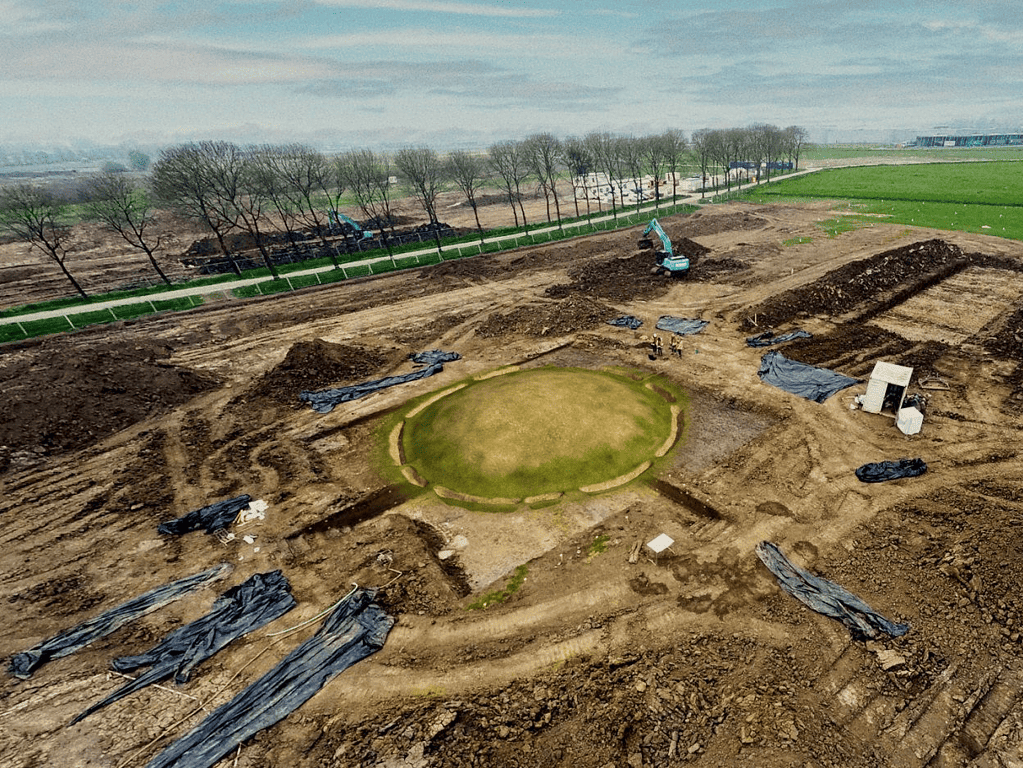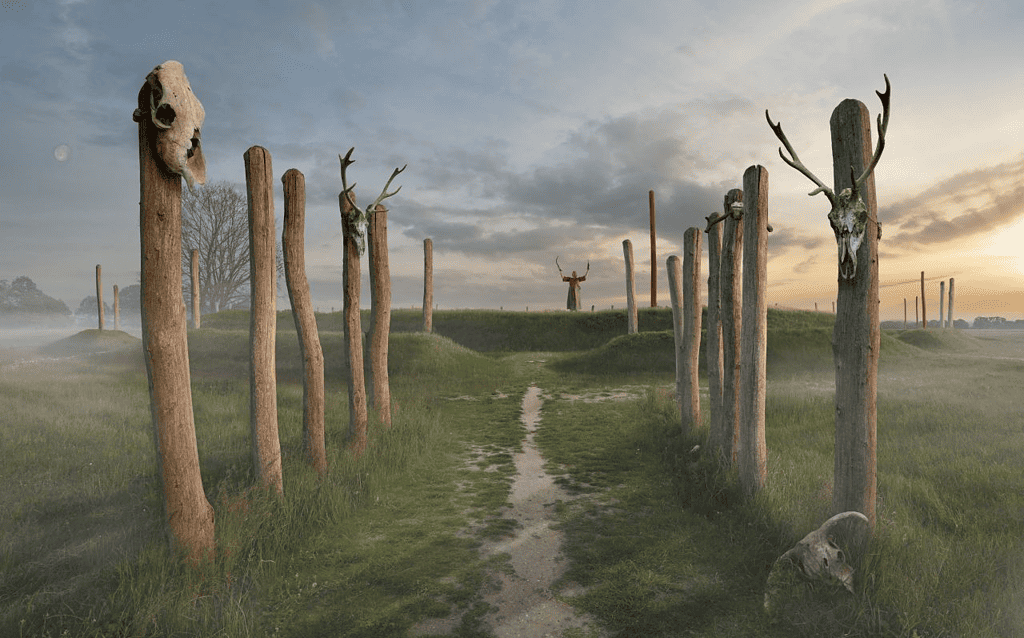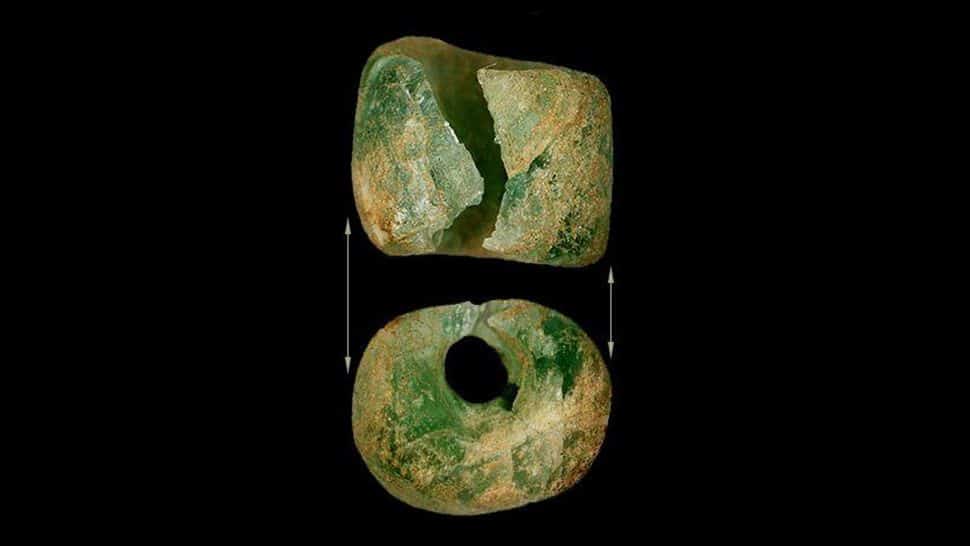Archaeologists have uncovered a 4000-year-old structure that is laid out in a way strongly reminiscent of Stonehenge. Though the sanctuary lacks the big stones that Stonehenge boasts, it’s made up of ditches and burial mounds that resemble its British counterpart.

Researchers are still debating what exactly Stonehenge was used for, but it’s clear that the sanctuary contains much more than just the monument. All around the stone monument, there’s a network of roads, mounds, and other structures that were likely spiritual in nature. Similarly, the sanctuary in the Netherlands is pretty vast. It’s around three football fields in size and to make it even more interesting, the entire site is riddled with ritualic offerings, including animals, human skulls, and valuable items.
The sanctuary was built from wood, and these offerings are placed precisely where light would have shone through the openings. This hints at the site also being used as a calendar.
“The largest mound served as a sun calendar, similar to the famous stones of Stonehenge in England,” said a statement from the Tiel municipality, where the finding was made.
“This sanctuary must have been a highly significant place where people kept track of special days in the year, performed rituals and buried their dead. Rows of poles stood along pathways used for processions.”

From Iraq to the Netherlands
It’s not the first notable finding on the site.
The modern story of the sanctuary starts in 2017, when archaeologists discovered several graves. When they started exploring the graves in more detail, scientists found that one contained a special glass bead. This bead came from Mesopotamia, today’s Iraq — 5000 km away from the site in the Netherlands. Not only is this the oldest bead discovered in the Netherlands, but it also shows that these ancient people were in contact somehow with Mesopotamia.
This discovery spurred a larger excavation project, during which researchers documented over a million objects and discovered the remarkable sanctuary. It took six years, but they found artifacts ranging from the Stone Age to the Roman Empire and the Middle Ages.

In total, archaeologists uncovered over 80 individuals, either buried or cremated. These were men, women, and children. This hints at the site being an active burial site. Based on dating, archaeologists also explained that the site would have been used for several centuries.
“Rarely do archaeologists get the chance to excavate so much terrain around burial mounds,” the researchers wrote in the statement. “Now it is clear how unique this find and this sanctuary” are.
The excavations also showed numerous animal skeletons, human skulls (in addition to the burials), and a bronze spear. This points at a gruesome site where sacrifices would have also been made, possibly during solstices. The spearhead was buried exactly where the sun’s rays hit the ground through an opening in the sanctuary.
Tracking the solstices and equinoxes was “important for religious festivals, for example, but also to calculate what the sowing and harvesting times [were],” the statement also explains. There would have likely been some farming nearby to provide the food products required for these types of events.
Archaeologists will finish work on the site soon, after which the entire site will be covered. Important artifacts and structures will be relocated to nearby museums.
The site will not be open to the public until it’s covered. However, two exhibits showing artifacts are set up. At the Flipje and Regional Museum, a selection from the site will remain on display until October. Meanwhile, the National Museum of Antiquities in Leiden is showing finds from a group grave located about 660 feet (200 meters) south of the burial mounds.
As researchers continue their work in the region, we can only anticipate what further revelations await us. It is indeed possible that many more sanctuaries, rich with historical and archaeological significance, lie waiting to be discovered in the surrounding areas. The journey to uncover our shared past continues.






